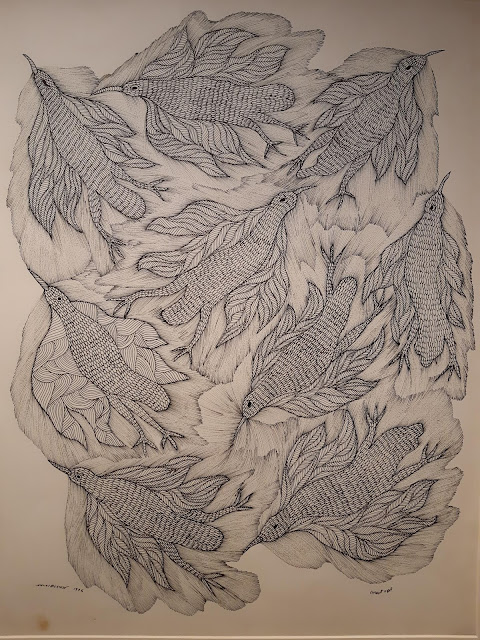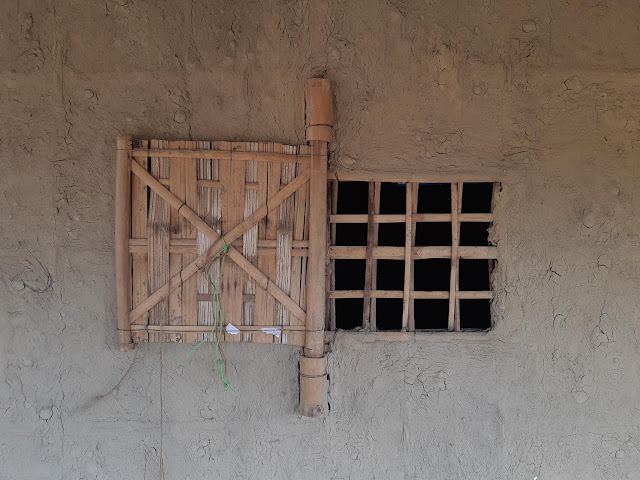

I spent my weekend in Ahmedabad over a panel discussion on 'Writing Architecture' organized as a part of the 'Death of Architecture' programming. The panelists I shared the conversation with were Miki Desai (architectural historian), Sameera Rathod (editor, SPADE), Shiny Varghese (Journalist), Meghal Arya (academician). The session was moderated by Sachin Shah, faculty at CEPT. Panel discussions are often blind games, if you do not know what you are going to be asked. They almost seem like vivas that induce immense pressure on giving engaging answers as well as inform audiences about the topic at hand. However, a theme like 'writing architecture' often becomes too generic if not held within a framed question. For example, one could look at the architectural writing in the last 20 years, or architectural writing and its relationship with new media, or emerging forms of writing and critical discourse in contemporary architecture. Further, these could be looked at through very specific examples, or works by panelists, which can be questioned within a critical framework in a forum. Without such a framework, often such discussions become freewheeling conversations through keywords derived from a broad conversation in order to keep things going for the duration of the talk. The conversation at the Death of Architecture on 'Writing Architecture' seemed to liminally rely on the panelists' improvisation to the questions posed. It is important for the moderator to have a position(s) in the background of which the responses of panelists could be understood, or through which a debate, and dialogue can be nurtured. Else, the talk becomes lament which everyone feels happy about. It is important for panel discussions to enter, even if performatively, the form of soft debate which provokes the audience to think through new ideas, or articulate new positions. While the moderator, in his humble attempt, threw reasonably open questions, I felt the discussion lacked spark. It was largely lost to thinking of writing as a way of reflection, introspection or criticism. However, the dimension of experience of writing and reading architecture was completely missed out. If one considers that writing constructs an experience through the employment of form/style, technique, content, tone and media, what criticalities must one expect from the writers of today? What has been the impact of writing? And how must one write today?In general, one needs to review on the form and content of writing in order to have a crisp discussion on the politics and agency of writing/writers today. While I have mentioned on other platforms, the avenues that have opened up for writers today, and the increased demand for writing - one needs to understand what is the subject, content, quality and kind of writing that is being produced? What purpose does it cater to? Whom are architectural writers writing for? How, after all, has writing suddenly become a viable and valid profession in the contemporary time in India? An analysis into textual production through these questions would allow us to map the different trajectories of the practices of writing today. Further, how have they addressed the practice - of profession or academia needs to be understood. One of the key questions to address is that of readership. What kind of books have come through over the last two decades in architecture? What kind of writing do people like to consume and why? Who are the best selling (contemporary) writers and how are they writing? What are the shifts in voices that write? Sachin rightly pointed out that on an average, an individual today reads more content in a day than one ever did, say even two decades ago. How does reading so much (often unnecessary, informative) content shape the reader today? What is the psychological and phenomenological experience of reading in the contemporary times? How are these shifts reflecting in the subjects and objects of architectural writing today?There are a lot of questions that could be jotted down, however, they would remain ambiguous unless we take up concrete examples to elucidate what it means to be textual today. Further, how is architecture being written today? One of the interesting ideas that came up through the discussion was if writing could be considered as a legitimate communicative form through which architecture could be conceptualized and constructed. Working through the example of archival drawings of the Manavendra Palace in Jaipur, that were mere diagrams with a scribbled set of poem-like notes - I tried to suggest that the form of representation, synonymous to "architectural drawing" today - that which consists of orthographic plans and sections, is fairly recent and even a colonial legacy. Were all buildings in history realised through drawings? And following the notes of Jaipur building archives, could one mobilize forms of writing as possible communicative tools for alternative spatial articulation?
| Drawing from City Palace Archives, Jaipur, (MSMS II Museum) with written instructions on construction. |
Drawing from the City Palace Archives, Jaipur (MSMS II Museum) with written instructions on construction.
|
Meghal Arya pointed out the often-embeddedness of academic writing in architectural jargon and unnecessary references, and her preference of the essay-form which allows her to contemplate while weaving through relevant examples. Riyaz Tayyibji suggested to preserve the sanctity of the disciplinary writing - that which constitutes the very discourse of architecture. However, my response was to expand the frame of "disciplinary" to knowledge production in general, and not restrict to architecture. Instead of making the discourse so exclusive, the discipline of architecture could productively borrow concepts and terms from many other disciplines (as much as lending its own terms to) in order to expand the manner in which space is otherwise narrated and understood today. Such a method would demand participation and dialogue with other disciplines, making architectural discourse more inclusive as well as enabling and amenable to other professions. My principal point however was, that students no longer related to the voice in which architecture has been narrated so far. Contemporary histories must find voices that resonate with the language which this generation is more conversant and comfortable with. The tapping of writing forms that get shaped through new media must be understood and strategised within more serious writing projects. This could be a way of involving younger audiences into both writing as well as reading, ultimately architectural conversations. Historians of architecture need to update the methods and materials, along with the narrative forms they employ in architectural research. Space is no longer in habited through the morality of romantic socialism of nationalism, narratives against which so much architecture in India is always backdropped. The recent excess of discussions in this field have also been around informality and impermanence. These have been substantial formulations, and they certainly hold value. However, how must architects narrate these stories to their community and larger audiences, beyond blind lament, empty critique or indulgent introspections? Those narrations may perhaps shape new experiences through writing.




















































